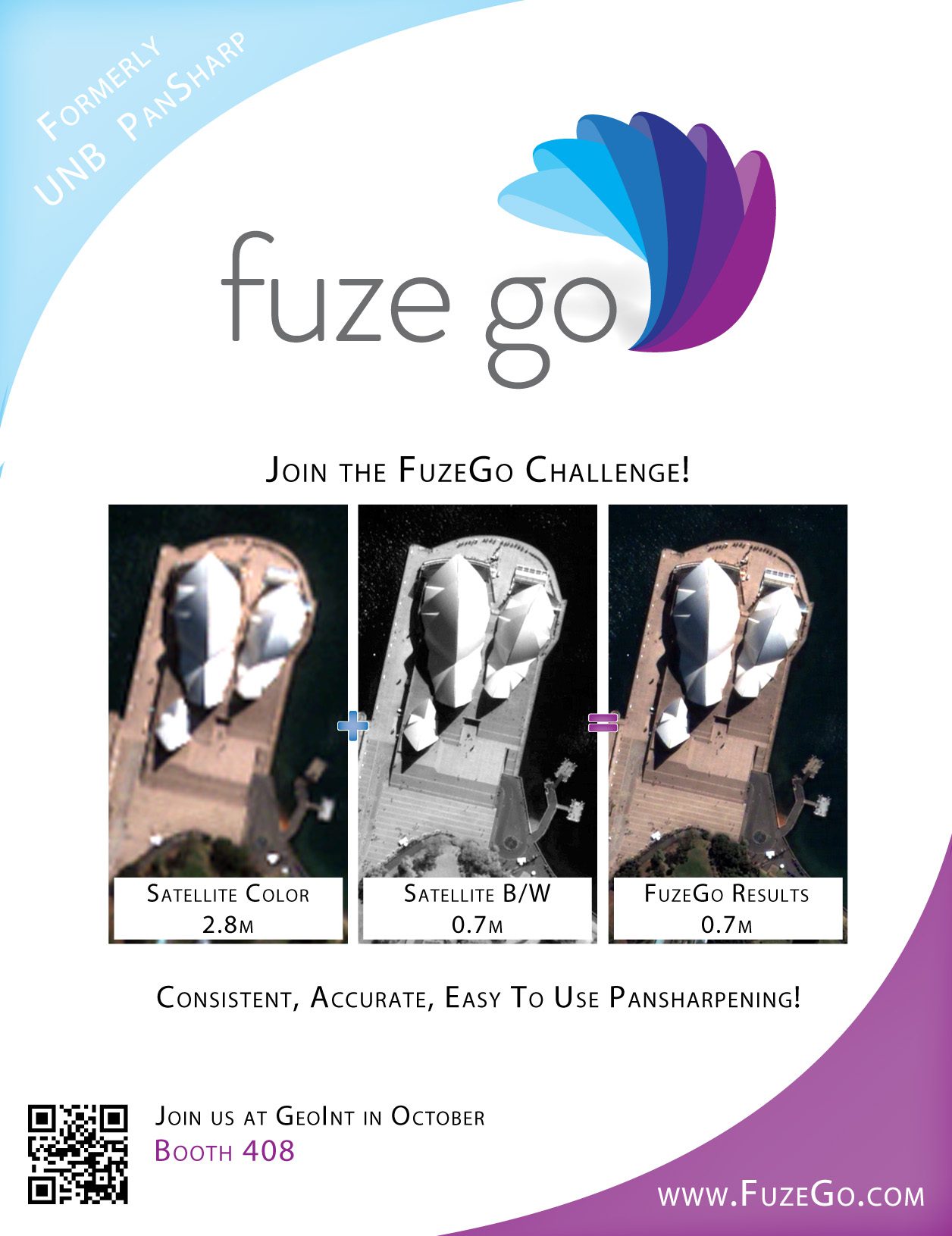Image Fusion
For the defense industry, the ability to have accurate color satellite image information is invaluable. Satellite data can be generated daily and from a safe distance. This means a target can be monitored for changes in activities real time and with discretion, providing accurate monitoring and safety for military personnel.
Pan-sharpening, also called image fusion, is a technique used to integrate the geometric detail of a high-resolution panchromatic (pan) image and the color information of a low-resolution multispectral (MS) image to produce a high-resolution MS image. More than 70 percent of optical Earth observation satellites and many modern digital aerial cameras simultaneously collect high-resolution pan and low-resolution MS images to (1) record the best possible spatial and spectral information of Earth's surface and (2) overcome the limitations of sensor materials, on-board storage and data transmission rate from a satellite to the ground. Most of these Pan and MS images come from recently developed high-resolution satellites and airborne cameras. Most remote sensing and geographic information system (GIS) applications require high-resolution color imagery. Therefore, an effective and high-quality pan-sharpening technique is crucial for the success of many geospatial applications.
Since the mid-1980s, pan-sharpening has received significant attention in remote sensing and image processing, resulting in various pan-sharpening techniques. However, many research papers have reported the limitations of existing pan-sharpening techniques. The most significant problem is color distortion. In addition, pan-sharpening quality often depends on the operator's experience and on the image data set used. The major reason for the color distortion in pan-sharpening is the wavelength extension of the new satellites, as their wavelength range often extends from visible to the near infrared for pan images.
For the defense industry, accurate color is critical to have confidence in the imaging data. In addition, simple, easy-to-use software is invaluable, because manyGISand remote sensing technicians are trained for specific roles and don't have the extensive technical background required to work the complexity of most of the currently available pan-sharpening algorithms.

With FuzeGo, if the original MS and pan images are geo-referenced, resampling and pan-sharpening can be accomplished in one step.
The UNB-PanSharp method, a statistics-based pan-sharpening technique recently implemented in Scene Sharp's FuzeGo software, shows significant promise as an automated method. FuzeGo offers pan-sharpening as a one-step process. Most importantly, the software solves the two major pan-sharpening problems: color distortion and operator (or image data) dependency.
Recently a comparison among different pan-sharpening techniques was conducted at the
University of New Brunswick. To check the robustness of the pan-sharpening techniques, high-resolution images from different satellites, different years and different areas were used for a pan-sharpening comparison. The images included pan and MS images from IKONOS, QuickBird, GeoEye-1 and WorldView-2 satellites. Professional visual image analysis was performed for the pan-sharpening quality evaluation. To avoid bias in the visual analysis, all the images before and after pan-sharpening were displayed under the same visualization condition.
The comparisons revealed that FuzeGo produced the best results for all type of sensors. This is a fully automated one-step process that's independent of an operator's pan-sharpening experience and the data set being used. Other pan-sharpening techniques work well for some images or sensors, but not for others. In addition, it was found that some of the pan-sharpening techniques evaluated can't pan-sharpen more than four spectral bands.
The test results of different pan-sharpening algorithms applied on high-resolution satellite images have been provided at www.fuzego.com under the Teachers and Students section. The results file can be downloaded for educational purposes. Furthermore, the free version of the FuzeGo software is available for trial purposes.


